70mm Film Introductions
|
Read more
at in70mm.com The 70mm Newsletter |
| Feature film text by: Wolfram Hannemann, Korntal, Germany | Date: 30.09.2016 |
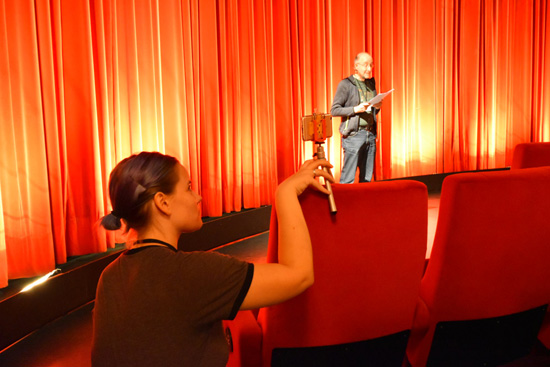 Wolfram
Hannemann introducing 12th Todd-AO Festival. Picture by Thomas Hauerslev Wolfram
Hannemann introducing 12th Todd-AO Festival. Picture by Thomas HauerslevGuten Morgen, meine Damen und Herren, herzlich willkommen liebe Breitbild-Gemeinde! Im Namen der Schauburg darf ich Sie ganz herzlich zum 12. Todd-AO 70mm Filmfestival begrüßen. In was für spannenden Zeiten wir doch leben! Als wir dieses Nostalgie-Festival im Jahre 2005 ins Leben riefen, hätte niemand von uns gedacht, dass wir zwölf Jahre später gleich zwei nagelneue 70mm-Kopien im Programm haben werden. Und dazu einer sogar im überbreiten Ultra Panavision Format. Und es kündigt sich bereits an, dass wir möglicherweise schon im nächsten Jahr mit Nachschub rechnen dürfen. Denn nicht nur Christopher Nolans neuester Film DÜNKIRCHEN wird im 70mm-Format in die Kinos gebracht, auch bei PHANTASTISCHE TIERWESEN UND WO SIE ZU FINDEN SIND deutet sich ein 70mm-Release an. Bis es allerdings soweit ist, beschäftigen wir uns an diesem Wochenende erst einmal mit hasserfüllten Cowboys, einem russischen U-Boot-Kapitän, russischen Ballettänzerinnen- und Tänzern, einer fleischfressenden Pflanze, zwei stahlharten Profis, einer Herde Menschenaffen, kaugummikauenden Testpiloten, der Evakuierung Shanghais, einem Polizeidetektiv mit Trenchcoat, zwei sich duellierenden Superhelden und zwei sich verflechtende Familien im viktorianischen England. Das alles und noch mehr im Königsformat 70mm. Mein Name ist Wolfram Hannemann, ich bin Filmjournalist und ich werde Ihnen wie gewohnt zu jedem der Filme am Anfang ein bisschen was erzählen. Und weil wir internationales Publikum zu Gast haben, werde ich Teile davon auf Deutsch und andere Teile auf Englisch präsentieren. |
More in 70mm reading: Todd-AO Festival Home • 12. Todd-AO Festival • Wilkommen | Welcome • Intro | Festival Images • 2016 Festival Flyer (PDF) Festival Archives • Festival Through the Years • Festival Schedule and Archive • More Schauburg Cinerama Festivals in Pictures • Schauburg Cinerama • Best of Todd-AO Festival • Guests | Billboards | Posters Internet link: • Schauburg.de • laserhotline.de |
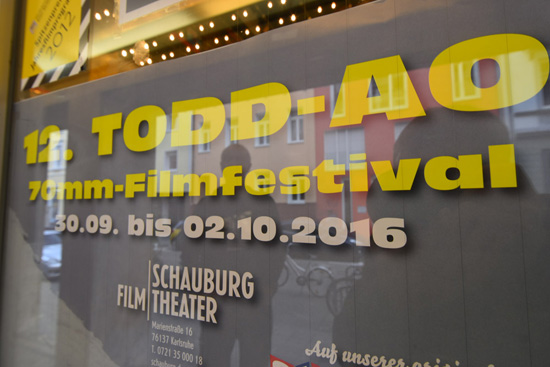 Picture
by Thomas Hauerslev Picture
by Thomas HauerslevOn this weekend I would like to invite you to Minnie's Haberdashery, which the Hateful Eight will turn into a Little Shop of Horrors during the course of an evening, while some Gorillas in the Mist are tracked down by Dick Tracy during his Hunt for Red October. While the Bolshoi Ballet 67 has got The Right Stuff to entertain perfectly, The Empire of the Sun is threatened by a Lethal Weapon resulting from the duel Batman V Superman. To avoid any trouble you may just take the Concorde as your Bridge to Space which directly leads to Howards End. If all this sounds very exciting to you than I can congratulate you – you are definitely at the right place, because of all the before mentioned will happen in this breathtaking theatre – in ultra wide and colorful 70mm on the big curved screen! A word of warning to our hardcore of festival guests: you will be treated to our most colorful program ever! Almost no „MagentaVision“ or „Pinkorama“ on our curve. My name is Wolfram Hannemann, I am a film journalist and your anchorman for this weekend. If you are wondering what language I am currently talking in let me tell you that it is state of the art English with a strong Swabian accent. I am confident that by the end of our festival you will understand perfectly. |
|
"Howards End", 30 September 2016 | |
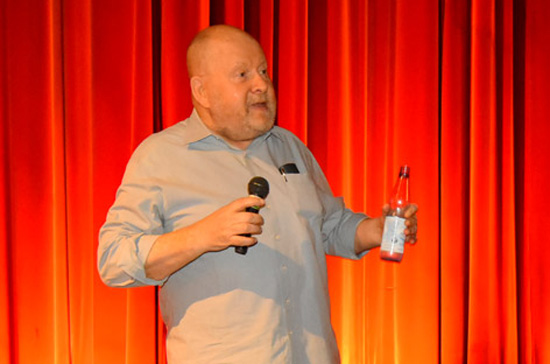 Thomas
_____ Introducing "Empire of the Sun". Picture by Thomas Hauerslev Thomas
_____ Introducing "Empire of the Sun". Picture by Thomas HauerslevWir beginnen unseren Reigen breitformatiger Kost heute Morgen mit der britischen Produktion „Wiedersehen in Howards End“, einer Verfilmung nach E.M.Forster, die 1992 unter Regie von James Ivory in die Kinos kam. Vor dem Hintergrund der sozialen Gegensätze entfaltet sich ein subtiles Psychogramm der spätviktorianischen englischen Gesellschaft, als sich die Wege der unkonventionellen Schlegel-Schwestern, die in liberaler Bohème leben, mit denen der traditionell-konservativen Familie Wilcox kreuzen. Nach Erfolgen wie „Zimmer mit Aussicht“ und „Maurice“ war dies bereits die dritte Verfilmung eines Romans von E.M. Forster, den die Merchant Ivory Produktionsfirma realisierte. Gleichzeitig war es der erste von zwei Filmen, die Merchant Ivory mit 70mm-Kopien in die Kinos brachte. Der zweite Film, „Was vom Tage übrig blieb“, folgte ein Jahr später. „Wiedersehen in Howards End“ erfreute sich bei den Kritikern großer Beliebtheit und Roger Ebert fügte ihn im Juni 2005 sogar zu seiner Liste „Great Films“ hinzu. Leonard Maltin gab dem Film 4 von 4 Sternen, was höchst selten passiert, und bezeichnete ihn als „Außergewöhnlich in jeder Hinsicht“. In diesem Jahr erfuhr der Film eine besondere Ehre: er wurde während der Filmfestspiele in Cannes als Teil der „Cannes Classics“ aufgeführt und wurde nach sorgfältiger Restaurierung am 26. August erneut ins Kino gebracht. Allerdings nicht im 70mm-Format, also jenem Format, das ich persönlich mehr als angemessen für diesen Film empfinde. Ich kann mich noch sehr genau daran erinnern, dass wir den Film bei seiner Erstaufführung in Stuttgart nur in einer 35mm-Kopie zu sehen bekamen. Erst viele Wochen später wurde der Film dann im 70mm-Format eingesetzt. Was für ein Unterschied! Jetzt endlich konnten die in Super 35 aufgenommenen Bilder von Tony Pierce-Roberts ihre Wirkung voll entfalten und brachten damit die Oscar-prämierte Ausstattung von Luciana Arrighi und Ian Whittaker erst richtig zur Geltung. |
Internet link: • Schauburg.de • Ticket reservation • There is a Festival rate of Euro 78,00 for single room and Euro 88,00 for double room at the ACHAT PLAZA just around the Corner. Rooms can be booked at this rate either via Phone +721-37170 or e-mail, mention "Schauburg 70mm Filmfestival" Filmtheater Schauburg Att: Herbert Born Marienstraße 16 76137 Karlsruhe Germany Tel: +49 721 35 000 11 mobil: +49 151 1668 9172 Fax: +49 721 38 00 47 |
 Image
by Herbert Born Image
by Herbert BornWhat we are going to see right after this is a typical „Merchant-Ivory film“. The expression "Merchant-Ivory film" has made its way into common parlance, to denote a particular genre of film rather than the actual production company. Its heyday was the 1980s and 1990s with such films as „A Room with a View“ and „Howards End“. A typical "Merchant-Ivory film" would be a period piece set in the early 20th century, usually in Edwardian England, featuring lavish sets and top British actors portraying genteel characters who suffer from disillusionment and tragic entanglements. Merchant Ivory Productions was founded in 1961 by producer Ismail Merchant (d. 2005) and director James Ivory. Their films were for the most part produced by Merchant, directed by Ivory, and 23 (of the 44 total films) were scripted by Ruth Prawer Jhabvala (d. 2013) in some capacity, all but two of those with solo credit. The films were often based upon novels or short stories, particularly the work of Henry James, E. M. Forster, and two novels by Jhabvala herself. The initial goal of the company was "to make English-language films in India aimed at the international market." The style of Merchant Ivory films set and photographed in India became iconic. The company also went on to make films in England and America. Merchant once commented: "It is a strange marriage we have at Merchant Ivory... I am an Indian Muslim, Ruth is a German Jew, and Jim is a Protestant American. Someone once described us as a three-headed god. Maybe they should have called us a three-headed monster!" „Howards End“ will be presented in a German dubbed 70mm blow up print from a Super 35 negative complete with 6-track Dolby Stereo magnetic sound. |
|
"Batman v Superman: Dawn of Justice", 30 September 2016 | |
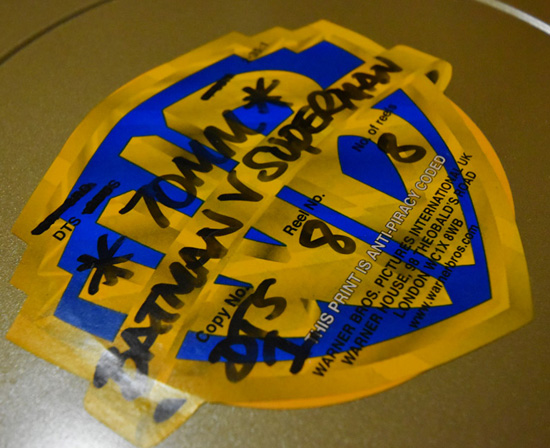 Guten
Abend, meine Damen und Herren, Guten
Abend, meine Damen und Herren,liebe Filmfreundinnen und –freunde, ich darf Sie ganz herzlich begrüßen zur Deutschlandpremiere der 70mm-Kopie von Zack Snyders Superheldenepos „Batman V Superman: Dawn of Justice“. Zack Snyder wurde am 01. März 1966 in der amerikanischen Stadt Green Bay geboren. Er ging auf die Daycroft School in Connecticut, an der seine Eltern als Betreuer arbeiteten, um ihrem Sohn den Besuch der Schule zu ermöglichen. Nach seinem Schulabschluss studierte er in London an der Heatherley’s School of Fine Art Malerei, was später auch erheblichen Einfluss auf die Gestaltung seiner Filme hatte. Nachdem er das Studium am Heatherley‘s beendet hatte, wechselte er an das Art Center College of Design in Pasadena, das er mit besonderer Auszeichnung abschloss. Zack Snyder machte sich zunächst als Regisseur und Kameramann für Werbespots und Musikclips (u.a. für Shawn Colvin, Soul Asylum, Morrissey und Heather Nova) einen Namen. Darüber hinaus drehte er Porträts über berühmte Sportler, wie Michael Jordan und Martina Navrátilová. Mit seinem Spielfilmdebüt, dem Remake des Zombieklassikers „Dawn of the Dead“ von George A. Romero, gelang Snyder 2004 ein großer Erfolg. Sein zweiter Kinofilm, die Verfilmung von Frank Millers Comic „300“ wurde ebenfalls weltweit ein großer Erfolg und spielte 400 Millionen US-Dollar ein. Mit seiner außergewöhnlichen Optik, die wie auf Pergamentpapier aufgenommen wirkt, setzte Zack Snyder mit „300“ neue Maßstäbe und katapultierte sich in die Riege der visionärsten Regisseure unserer Zeit. Es folgten die Verfilmung von Alan Moores Comic „Watchmen“, der Animationsfilm „Die Legende der Wächter“, „Sucker Punch“, „Man of Steel“ sowie die von Snyder geschriebene und produzierte „300“-Fortsetzung „300: Rise of an Empire“. Gemeinsam mit seiner Frau Deborah „Deb“ Snyder betreibt Zack Snyder die Produktionsfirma Cruel & Unusual Films in Burbank. Neben seiner Arbeit erwies sich Snyder auch privat als äußerst fruchtbar: er hat vier Kinder aus seiner ersten Ehe, zwei Kinder aus einer späteren Beziehung und zwei Kinder aus seiner Ehe mit Deb Snyder. Seit „300“ wurden alle Filme von Zack Snyder auch in IMAX-Versionen in die Kinos gebracht. Jedoch war es bei „Batman V Superman“ das erste Mal, dass Snyder auch tatsächlich IMAX-Kameras für zumindest einige Schlüsselszenen einsetzte. Bei diesen Sequenzen war in IMAX-Kinos ein Bildformatwechsel zu sehen. Bei klassischen filmbasierten 15/70- sowie digitalen 4K Laser-Installationen von 1:2.35 auf 1:1.44 und bei digitalen 2K Installationen von 1:2.35 auf 1:1.90. Diese Bildformatwechsel sind in unserer 70mm-Kopie nicht vorhanden, da hier alles auf das klassische 1:2.2-Format angepasst wurde. |
|
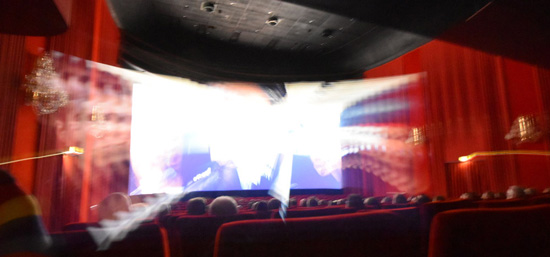 Superman
exploding on the curve. Image Thomas Hauerslev Superman
exploding on the curve. Image Thomas HauerslevTo capture the epic world of „Batman V Superman“, director Snyder turned to director of photography Larry Fong, with whom he has worked several times. „It was exciting developing the look for the film,“ Fong says. „Zack definitely has his own style but he’s not afraid to try new things as well.“ While the camera work on „Man of Steel“ was mainly handheld, Fong says for „Batman V Superman“ Snyder wanted to change it up. Therefore Fong took a more classic approach, with mostly dolly, Technocrane and Steadicam moves. „Designing the shots with these tools was good discipline. We wanted a naturalistic look, but with a heightened reality. That was the feel we were going for.“ The variety of shot designs was only dwarfed by the variety of formats. „When we first started talking about format, Zack was immediately drawn to 35mm anamorphic with single-camera coverage. But by the end, we had shot in 16mm, 35mm anamorphic, 35mm spherical, 65mm, GoPro, digital and IMAX,“ Fong laughs. IMAX presented one of the biggest challenges, according to the cinematographer. „IMAX cameras are big and heavy, with very shallow depth of field. Zack likes to move the camera a lot,“ he adds „so we really pushed the limits. We attempted some very elaborate camera moves and even handheld shots with it, and our camera operator, John Clothier, and first assistant camera, Bill Coe, were incredible. The results are amazing. You can really feel the immense scope of the format.“ Enhancing the impressive scale of the film is the score created by Hans Zimmer and Junkie XL, who worked as a team to bring forth a composition worthy of the iconic Super Heroes on the screen. To begin their process, Zimmer says, „Everything starts with Zack coming into the room and saying, ‘I want to tell you guys a story.’ For us, that’s a great way of entering that world.“ Incorporating the musical themes from „Man of Steel“ for the Superman and Clark and Lois scenes was key for the composers, who wanted to give audiences that familiarity in the hero’s expanding world. „We brought back Hans’s concept for Superman in the last film, including the steel guitar and drum circle, which really celebrate the power of that character, and that’s a big discussion in this movie,“ Junkie XL states. „We redefined it a bit and I think we were both pleased that it worked so well for this film.“ Together, the composers worked out the new themes for Batman. Zimmer says he found the character easier to approach by focusing on his alter ego. „I paid a lot of attention to Bruce Wayne. There’s so much anger inside of him and he’s so compelling, that it became a mission to serve those emotions. I tried to work out how to write a theme that is full of ambiguity and still gives a shorthand into this unstable character, to show that the dark can be light…you never know.“ For Wonder Woman’s debut, Zimmer and Junkie XL composed a tribal theme highlighted by the distinct sound of an electric cello, with cellist Tina Guo playing the part. Notes Zimmer, „Like Diana Prince, Tina is elegant, and she then picks up her cello—her sword—and becomes the most ferocious banshee, unleashed, a warrior like Wonder Woman. The first time I played the piece for Zack and Debbie, they were visibly shocked in the very best way, and that’s what you want, just that right amount of surprise.“ Composer Hans Zimmer said „Batman V Superman“ will be that last superhero movie he will compose music for. Well, let’s wait and see... I am proud to say that it will be the first time that „Batman V Superman“ will be screened in its 70mm version here in Germany. It is the theatrical release version which runs for 151 minutes. The director’s cut, which runs for 183 minutes, is only available on home video. And now, ladies & gentlemen, let the battle begin! |
|
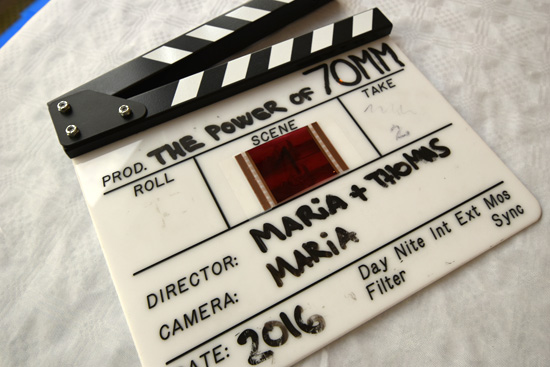 Über die Laufzeit des folgenden Films gibt es unterschiedliche Angaben.
So nennen Carr & Hayes eine Spielzeit von 98 Minuten im Produktionsland
Russland und 82 Minuten in den USA, wobei diese 82 Minuten angeblich
eine 7-minütige Pause enthalten. Die Lauflänge der deutschen Fassung
wird mit 75 Minuten beziffert – also ohne die 7 Minuten Pause. Wie auch
immer – „Bolshoi Ballett 67“ ist der kürzeste Langfilm in unserem
diesjährigen Festivalprogramm. Über die Laufzeit des folgenden Films gibt es unterschiedliche Angaben.
So nennen Carr & Hayes eine Spielzeit von 98 Minuten im Produktionsland
Russland und 82 Minuten in den USA, wobei diese 82 Minuten angeblich
eine 7-minütige Pause enthalten. Die Lauflänge der deutschen Fassung
wird mit 75 Minuten beziffert – also ohne die 7 Minuten Pause. Wie auch
immer – „Bolshoi Ballett 67“ ist der kürzeste Langfilm in unserem
diesjährigen Festivalprogramm. Die Regie teilen sich Leonid Lawrowski und Alexander Schelenkow, Letzterer seines Zeichens Kameramann und unter anderem verantwortlich für die russische Fassung von „Krieg und Frieden“ und damit ein Experte im Umgang mit SovScope 70 Kameras. Bei meinen Recherchen zu diesem Film habe ich leider kaum Informationen gefunden, bis auf ein paar Rezensionen der DVD des Films, die – so sei hier angemerkt – auf ihrem Cover mit dem magischen Wort „70mm“ wirbt und von Technicolor IB Elementen gemastert wurde Lassen Sie mich eine dieser Filmrezensionen zitieren – im englischen Original: This is one of the reviews of the DVD of „Bolshoi Ballet 67“ which I discovered on the internet and which is hard work to read because of the included Russian names! „Lavrowsky paints a masterful portrait of the long years of hard work, dedication and patience required by the select few chosen to study under the tutelage of some of Russia's greatest masters - all for the dream of becoming the next great Russian ballet dancer. „Bolshoi Ballet 67“ features excerpts from the 1966 performance season with some of Russia's most famous stars: Raissa Struhkoua, Maya Samokhvaloua, Vladimir Vasiliev, Ekaterina Maximovg, and Natalie Bessmertnoug. The late Galina Ulanova makes a brief non-performance in one scene as she inspects the forms of a group of young ballerinas. When it comes to production, the Bolshoi is unparalleled. Marvel at its exotic sets and absorb the rich sound of the world-class Bolshoi Symphony through eight works, including Maurice Ravel's Bolero and La Valse, Sergei Prokofiev's Stone Flower, and Variations on a Theme by Paganini by Sergei Rachmaninoff. Here it is, the „Bolshoi Ballet 67“, completely restored in its original IB Technicolor format and digitally enhanced for your viewing and listening pleasure.“ So step in and be our guest at the Bolshoi in this analogue enhanced 70mm presentation! |
|
"Gorillas in the Mist", 1 October 2016 | |
 „Gorillas
im Nebel“ entstand im Jahre 1988 unter Regie von Michael Apted. Die
Geschichte der US-amerikanischen Zoologin und Verhaltensforscherin Dian
Fossey, die sich der Erforschung des Verhaltens sowie dem Schutz der
Berggorillas widmete, wurde in den Kategorien „Beste Hauptdarstellerin“,
„Bester Filmschnitt“, „Beste Filmmusik“, „Bester Ton“ und „Bestes
adaptiertes Drehbuch“ für den Oscar nominiert und gewann je einen Golden
Globe für die „Beste Hauptdarstellerin“ und die „Beste Filmmusik“. „Gorillas
im Nebel“ entstand im Jahre 1988 unter Regie von Michael Apted. Die
Geschichte der US-amerikanischen Zoologin und Verhaltensforscherin Dian
Fossey, die sich der Erforschung des Verhaltens sowie dem Schutz der
Berggorillas widmete, wurde in den Kategorien „Beste Hauptdarstellerin“,
„Bester Filmschnitt“, „Beste Filmmusik“, „Bester Ton“ und „Bestes
adaptiertes Drehbuch“ für den Oscar nominiert und gewann je einen Golden
Globe für die „Beste Hauptdarstellerin“ und die „Beste Filmmusik“.Apteds Film erhielt überwiegend positive Kritiken, in denen insbesondere Sigourney Weavers Darstellung sowie die technischen Herausforderungen gelobt wurden. Doch es gab auch Stimmen, die fehlende Tiefe in der Darstellung der Dian Fossey auf der Leinwand kritisierten. Hellmuth Karasek schrieb im „Spiegel“, dass der Film, obwohl um Objektivität bemüht, „zum Appell für die Ideen und Taten einer Frau, die im weitesten Sinne ihr Leben für das ihrer tierischen Schützlinge opferte“ gerate. Gorillas im Nebel sei „mehr […] als eine verfilmte Biographie und weniger als ein ökologisches Pamphlet: Es ist ein Kinofilm und (damit) ein Märchen, in dem sich momentane kollektive Schuldgefühle, Sehnsüchte und Hoffnungen spiegeln.“ Und Andreas Kilb von der „Zeit“ kritisierte, dass Apted die Geschichte von Dian Fossey mit „Sentimentalität, malerischem Pomp und weiblicher Schönheit“ ergänze. „Dadurch fehlt dem Film genau das, was vielleicht das Wichtigste ist: die Wahrheit.“ Was jedoch für die meisten hier im Publikum weitaus wichtiger ist: der Film wurde mit 70mm-Kopien in die Kinos gebracht – sogar in Deutschland. Tatsächlich dürfte „Gorillas im Nebel“ einer der ganz wenigen Filme sein, die zwar in Deutschland mit mindestens einer 70mm-Kopie bedacht wurden, nicht aber in England. Als ich mir den Film bei seiner Erstaufführung im Warner West End Kino am Leicester Square in London angesehen habe, war ich ziemlich erstaunt nur eine 35mm-Kopie zu sehen! Bevor ich Ihnen auf Englisch noch ein paar Informationen zu den Dreharbeiten gebe, noch ein amüsantes Zitat der Hauptdarstellerin. Denn zwei Jahre nach der Uraufführung des Films wurden Sigourney Weaver und ihr Mann Jim Simpson Eltern einer Tochter, Charlotte. Weaver sagte damals, dass es keine bessere Vorbereitung für ihre Mutterrolle gegeben hätte, als während der Dreharbeiten zu „Gorillas im Nebel“ ständig von Baby-Gorillas besprungen und angepinkelt zu werden. |
|
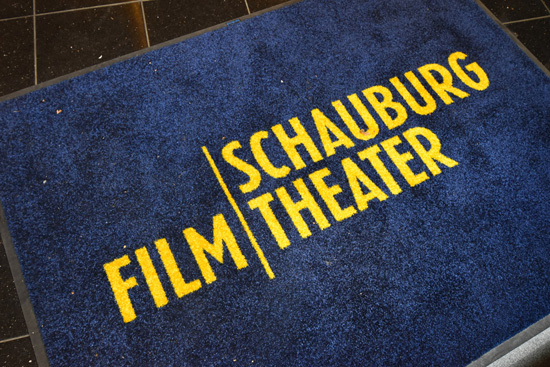 Producer Arne Glimcher and Universal had acquired the movie rights to
"Gorillas in the Mist," Dian Fossey's 1983 best-selling memoir. Glimcher
traveled to Rwanda in 1985 to meet her and discuss ideas for the movie.
Hours before their scheduled meeting, Fossey was murdered by a
machete-wielding assailant. She was 53. Warner Bros. planned a rival
project about Fossey, based on a Life magazine article about her written
by Harold Hayes. After legal wrangling between the two studios, a
co-production was arranged and a script was written drawing upon both
Fossey's autobiography and Hayes' article. Producer Arne Glimcher and Universal had acquired the movie rights to
"Gorillas in the Mist," Dian Fossey's 1983 best-selling memoir. Glimcher
traveled to Rwanda in 1985 to meet her and discuss ideas for the movie.
Hours before their scheduled meeting, Fossey was murdered by a
machete-wielding assailant. She was 53. Warner Bros. planned a rival
project about Fossey, based on a Life magazine article about her written
by Harold Hayes. After legal wrangling between the two studios, a
co-production was arranged and a script was written drawing upon both
Fossey's autobiography and Hayes' article.The film shot for two months in Rwanda and another month in additional African locations. Much of the shoot took place at the Karisoke Research Center, founded by Fossey, where she worked and observed her gorillas. The crew had to hike to the site -- located 12,000 feet above sea level on an extinct volcano in Rwanda -- every day from a base camp at 8,500 feet, enduring temperatures below 40 degrees, carrying their gear on their backs, and traveling through thick vegetation and mudslides. For all the hours spent hiking each way from the base camp, government restrictions limited the crew to filming the gorillas for only an hour a day. Though only a few could hike to the shoot each day, the base camp housed some 200 crew members and actors in tents. Producer Terence Clegg had also filmed "Out of Africa" in Kenya and "Cry Freedom" in Zimbabwe, but he found "Gorillas" to be his most difficult African production. The reason: the Rwandan base camp had no telephones or postal service. Clegg hired some 400 Rwandans as porters to bring parcels and messages up and down the mountain. Sigourney Weaver wore an earpiece so that the filmmakers could tell her what to do as she approached the gorillas. That allowed her to get remarkably close without the film crew disturbing the primates. She once tried to befriend a female gorilla, only to be threatened by a 400-pound male. The actress assumed a submissive position, and the male gorilla passed her by. He turned out to be Pablo, one of the gorillas Fossey had studied, and he earned himself a role on screen. Having grown accustomed to humans after years spent under Fossey's observation, the gorillas soon became accustomed to Weaver, who learned the gestures and belching grunts Fossey had used to communicate with them. Some of the gorilla footage, involving scenes of animals appearing injured or dying, was done with actors in suits. Monster make-up whiz Rick Baker, known for his work on "An American Werewolf in London" and Michael Jackson's "Thriller," made the suits. Apted was satisfied that the costumes helped the actors blend seamlessly with the real gorillas. In 2006, Weaver returned to Karisoke for the first time in 20 years to see how Fossey's gorillas were faring, filming her visit for a BBC documentary called "Gorillas Revisited." Indeed, Pablo was still there, as were some of the other primates she'd met on the set. At the time, the local gorilla population had grown to about 700. The Rwandan people she'd worked with hadn't fared as well. Many had disappeared and were presumed dead as a result of the 1994 genocide. „Gorillas in the Mist“ will be presented in a German dubbed 70mm blow up print and an aspect ratio of 1.85:1. |
|
"The Hunt for Red October", 1 October 2016 | |
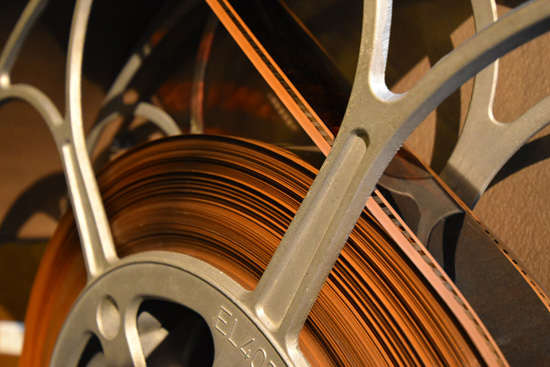 Unser nächster Film, „Jagd auf Roter
Oktober“, entstand im Jahre 1990 und basiert auf dem Roman von Tom
Clancy, der von Larry Ferguson und Donald Stewart für die große Leinwand
adaptiert wurde. Für die Regie wurde John McTiernan verpflichtet, der
zuvor bereits mit „Stirb langsam“ ein Händchen für Blockbuster-Kino
bewies. Gerne hätte McTiernan auch noch „Stirb langsam 2“ inszeniert,
doch seine vertraglichen Verpflichtungen gegenüber Paramount ließen dies
nicht zu und so heuerten die Produzenten Renny Harlin als Regisseur für
den zweiten Teil an. Unser nächster Film, „Jagd auf Roter
Oktober“, entstand im Jahre 1990 und basiert auf dem Roman von Tom
Clancy, der von Larry Ferguson und Donald Stewart für die große Leinwand
adaptiert wurde. Für die Regie wurde John McTiernan verpflichtet, der
zuvor bereits mit „Stirb langsam“ ein Händchen für Blockbuster-Kino
bewies. Gerne hätte McTiernan auch noch „Stirb langsam 2“ inszeniert,
doch seine vertraglichen Verpflichtungen gegenüber Paramount ließen dies
nicht zu und so heuerten die Produzenten Renny Harlin als Regisseur für
den zweiten Teil an.Wirft man einmal einen Blick auf die Besetzung von „Jagd auf Roter Oktober“, so wird schnell klar, dass man diesen Film als einen Männer-Film betrachten muss. Gates McFadden als Jack Ryans Gattin und Louise Brooks als dessen Tochter sowie Denise E. James als Flugbegleiterin sind die einzigen weiblichen Sprechrollen im Film und ihre Dialoge sind bereits zu Ende noch bevor die Anfangstitel vorüber sind! Nicht genug damit: weitere Szenen mit Gates McFadden in der Rolle der Cathy Ryan wurden aus der Endfassung des Films entfernt. Eigentlich hätte Klaus Maria Brandauer die Rolle des Kapitän Marko Ramius spielen sollen, doch er brach sich ein Bein noch bevor die Dreharbeiten begonnen hatten. Brandauer schlug seinen Freund Sean Connery für die Rolle vor, den er während der gemeinsamen Dreharbeiten zum James-Bond-Film „Sag niemals nie“ kennenlernte. Als ihm das Drehbuch zugefaxt wurde, lehnte Connery jedoch die Rolle zunächst ab. Seine Begründung: die Story sei unrealistisch angesichts des Endes des Kalten Krieges. Wer auch immer Connery das Fax schickte, vergaß ihm das Vorwort mitzufaxen. Darin wird erklärt, dass es sich um einen historischen Stoff handelt. Als Connery schließlich auch das Vorwort erhielt, willigte er in die Rolle ein. Für den Part des Jack Ryan war ursprünglich Kevin Costner vorgesehen, wurde aber durch Alec Baldwin ersetzt. Der wiederum nahm die Rolle an, weil sie von Harrison Ford abgelehnt wurde. Einige Jahre später schlüpfte Ford übrigens dann selbst in die Rolle des Jack Ryan, nämlich in „Die Stunde der Patrioten“ und „Das Kartell“. Übrigens gibt es eine Verbindung zwischen „Stirb langsam“ und „Jagd auf Roter Oktober“, die man als eine Art Trademark von Regisseur John McTiernan betrachten kann. Während Alec Baldwin als Jack Ryan am Ende des Films einen Teddybären nach Hause bringt, trägt Bruce Willis als John McLane gleich am Anfang des Films einen Teddybären. Es ist ein und derselbe Teddybär und sein Name lautet Stanley. Und im Abspann von „Roter Oktober“ bekommt er sogar seinen eigenen Credit! Ein kleiner Hinweis zur Sprachfassung von „Jagd auf Roter Oktober“: der Film beginnt in Russisch mit englischen Untertiteln und geht dann ganz unmerklich in Englisch ohne Untertitel über. Und genauso unmerklich wird nun auch meine Einführung vom Deutschen ins Englische übergehen. |
|
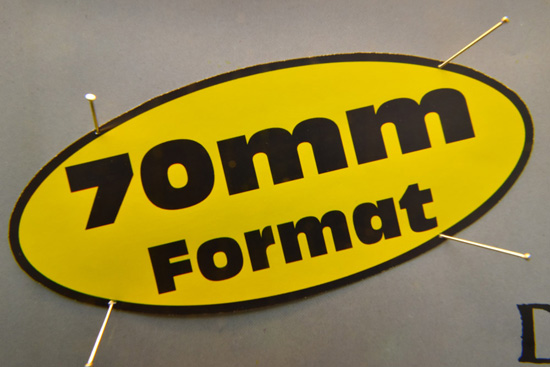 A good music score always was (or still is) part of director John
McTiernan’s approach in film making. So it is no wonder that he likes to
work with some of the most talented film composers, among which were
Jerry Goldsmith, Bill Conti, Alan Silvestri and Michael Kamen. The score
for „Red October“ was written by Basil Poledouris. This August
Poledouris would have celebrated his 71st birthday. However, he sadly
died of cancer in 2006. A good music score always was (or still is) part of director John
McTiernan’s approach in film making. So it is no wonder that he likes to
work with some of the most talented film composers, among which were
Jerry Goldsmith, Bill Conti, Alan Silvestri and Michael Kamen. The score
for „Red October“ was written by Basil Poledouris. This August
Poledouris would have celebrated his 71st birthday. However, he sadly
died of cancer in 2006. As a student Poledouris went to the University of Southern California, where he studied the arts of directing, cinematography, editing, sound and of course music. It was also at USC where he met John Milius and Randal Kleiser, both acclaimed directors with whom he would work in the future. Even though Basil had already composed music to John Milius' much talked about „Big Wednesday“ (1978), his real breakthrough came in 1982 when he composed the score to Milius' epic fantasy movie, „Conan the Barbarian“. The powerful themes that Basil created for this movie opened the eyes of the movie industry, as well as the public, and it is arguably one of the best soundtracks of the 80s. I still remember the first time I listened to the soundtrack LP for „Conan“. Wow! What a talent there was! His score for „The Hunt for Red October“ again makes use of a big orchestra and choir and perfectly serves the movie with a lot of Russian influences in the music. By the way: did you know that there is a feature film which is dedicated to two late film composers who have worked for director John McTiernan? The names in question are the already mentioned Basil Poledouris and Michael Kamen, who did the score for „Die Hard“. The film in question is titled „Captain Abu Raed“, a Jordanian movie directed by Amin Matalaga in 2007, which I highly recommend – not only for its superb music score, but also for its screenplay. „The Hunt for Red October“ is one of the rare movies which makes use of the so-called „split surround“ channel layout in its 70mm version. Having not only one channel feeding the surround speakers located in the auditorium, but two independent channels providing real stereo in the surrounds was restricted to 70mm screenings in the pre-digital sound age. I first saw „The Hunt for Red October“ during its initial run at the Empire theatre in London in 1990, where it was shown in 70mm with the added attraction of Dolby’s 7-track system. And it was amazing! Don’t worry: our theatre is capable of reproducing it the same way. „Red October“’s sound mix will really make you believe that you are in a submarine underwater. A lot of work went into creating all sorts of sound effects needed to make the film sound authentic. Getting the right torpedo sound was one of the major problems. This may be due to the fact that the sound of an actual torpedo is classified information. Since the sound itself is vital to the defense of the submarine, tapes only existed in the military world! With the extensive guidance from Ron Patton, who did work for a company called „Sonalysts“ which does consultation and training for nuclear power plants as well as sophisticated military computer program design, and thus having heard the real thing, the film’s sound designers finally succeeded in creating the torpedo sound. It took them four months. The final version was a combination of a speed boat going by, a Ferrari, animal screeches and growls, bubbles, a motorscooter and a screeching screen-door spring. Well done, boys! No wonder the film’s sound effects editing was honoured with an Academy Award. The sound mix itself got only nominated, and the Oscar went to „Dances with Wolves“ in that year. „The Hunt for Red October“ was one of the first American laserdisc releases which featured a Dolby Digital audio track. I remember when we first put it into our player and gave it a test run. After a while suddenly the right back surround channel muted! It occured to be a mastering problem with the laserdisc and the whole batch had to be re-done. Bare in mind that the disc was THX certified! Sometimes you really wonder what they are getting their money for! Anyway, I am confident that Vincent and Marcus have carefully prepared and aligned this 70mm print. So just sit back and relax – the hunt is on! |
|
"The Hateful Eight", 1 October 2016 | |
 Am
19. April 2014 erlebte Quentin Tarantinos „The Hateful 8“ eine Premiere
der besonderen Art. Im komplett ausverkauften Ace Hotel Theatre, einem
ehemaligen Kinopalast in Downtown Los Angeles, wurde eine Lesung des
Drehbuchs veranstaltet – vor nicht weniger als 1.600 Fans, die es gar
nicht erwarten konnten, das vieldiskutierte und eigentlich längst
abgeschriebene Projekt des Meisterregisseurs in dieser ungewöhnlichen
Form mitzuerleben. Schließlich hatte Tarantino „The Hateful 8“ gut ein
Jahr zuvor an den Nagel gehängt, nachdem das Drehbuch unautorisiert an
die Öffentlichkeit gelangt war. Womöglich also die einzige Gelegenheit,
das Projekt live zu erleben – und wenn schon nicht auf der großen
Leinwand, dann wenigstens auf der Theaterbühne Am
19. April 2014 erlebte Quentin Tarantinos „The Hateful 8“ eine Premiere
der besonderen Art. Im komplett ausverkauften Ace Hotel Theatre, einem
ehemaligen Kinopalast in Downtown Los Angeles, wurde eine Lesung des
Drehbuchs veranstaltet – vor nicht weniger als 1.600 Fans, die es gar
nicht erwarten konnten, das vieldiskutierte und eigentlich längst
abgeschriebene Projekt des Meisterregisseurs in dieser ungewöhnlichen
Form mitzuerleben. Schließlich hatte Tarantino „The Hateful 8“ gut ein
Jahr zuvor an den Nagel gehängt, nachdem das Drehbuch unautorisiert an
die Öffentlichkeit gelangt war. Womöglich also die einzige Gelegenheit,
das Projekt live zu erleben – und wenn schon nicht auf der großen
Leinwand, dann wenigstens auf der TheaterbühneSchon bei der Lesung in L.A. hatte Tarantino mehrfach erklärt, dass er den Film „im glorreichen 70mm-Format“ drehen würde. Er ging dann noch einen Schritt weiter und entschied sich für das fast vergessene Ultra Panavision 70, das zuletzt im Jahre 1966 bei „Khartoum – Aufstand am Nil“ zum Einsatz gekommen war. Für dieses Format werden anamorphotische Linsen verwendet (im Gegensatz zu den herkömmlichen sphärischen Linsen), die ein atemberaubendes Breitwandformat von 1:2,76 erzeugen. Ultra Panavision 70 wurde nur bei einer Handvoll Filmen verwendet, darunter „Meuterei auf der Bounty“, „Eine total, total, total, total verrückte Welt“, „Die größte Geschichte aller Zeiten“ und „Die letzte Schlacht“. „Mit 70mm fängt man öde Westernlandschaften, Schneewüsten, aber auch attraktivere Schauplätze perfekt ein“, erklärt Tarantino und ergänzt, dass das Format auch Innenaufnahmen voll zur Geltung bringt. „Ich bin fest überzeugt, dass das Breitwandformat für größere Intimität sorgt. Du bist näher an den Figuren dran. Ich glaube nicht, dass dieses Format sich nur für Reiseberichte eignet.“ Auch Produzentin Shannon McIntosh findet, dass das Breitbild gerade dann zur besonderen Spannung beiträgt, wenn die acht Hauptfiguren sich in Minnies Kurzwarenladen versammeln. „Es passiert unglaublich viel in den Bildern. Bei jedem neuen Sehen entdeckt man etwas anderes. Jedes Mal offenbaren diese „Hasser“, wie wir sie nennen, eine andere Nuance, einen anderen Ausdruck. Einfach großartig. Ich kann mir dafür kein anderes Bildformat vorstellen.“ „Es sind acht Leute im Raum, und so können wir das Bild nach und nach mit immer mehr von ihnen füllen“, erklärt Kameramann Robert Richardson. „Das Publikum kann in fast jeder Einstellung sehen, wo die Figuren sich befinden. Die Breite des Bildes erzeugt ein klaustrophobisches Gefühl, weil man alle Wände gleichzeitig sieht. Du wirst eingeschlossen, und die Erfahrung des Schauspiels wird meiner Meinung nach multipliziert.“ Die Breite des Bildes ist nur einer der Vorteile von Ultra Panavision 70. Das Material gibt Tiefe, Farbe und Licht ganz anders wieder als digitale Bilder: „Oft wird gesagt, die neuen digitalen Bilder seien so scharf“, sagt Shannon McIntosh. „Auch unsere Bilder sind scharf, aber sie besitzen eine ganz andere Schönheit. Wenn die Leute das gesehen haben, werden sie sich kaum nach digitalen Aufnahmen zurücksehnen. Es ist so spektakulär.“ Um ein Haar wäre dem Kinopublikum diese Erfahrung vorenthalten geblieben. Hätte Tarantino sich nicht mit einigen Filmstudios und seinen Kollegen Christopher Nolan und J.J. Abrams zusammengetan, um Kodak dabei zu unterstützen, auch weiterhin traditionelles Filmmaterial zu produzieren, wäre ein Look wie der von „The Hateful 8“ nicht mehr möglich gewesen. So beteiligte sich der Rollfilmhersteller schließlich an der Produktion von Tarantinos Film. Dass Tarantino und sein Kameramann Robert Richardson ihr Vorhaben überhaupt in die Tat umsetzen konnten, verdanken sie zu großen Teilen den Panavision-Mitarbeitern Bob Harvey, Jim Raudebush und Dan Sasaki. Sie gruben tief in den Archiven der legendären Filmfirma und förderten fünfzehn alte Objektive zutage, von denen einige schon beim berühmten Wagenrennen aus „Ben Hur“ zum Einsatz kamen. Die Objektive wurden überholt und so angepasst, dass sie auch vor moderne Kameras geschraubt werden konnten. Danach testeten Richardson, Sasaki und Kameraassistent Gregor Tavenner sie auf ihre Empfindlichkeit gegen Kälte und Feuchtigkeit. Schließlich stand ihnen ein Dreh unter extremen Wetterbedingungen bevor. „Es war erstaunlich“, berichtet Tavenner. „Die meisten dieser Linsen funktionierten auf Anhieb einwandfrei. Als hätte man einen sehr teuren Wein aus den fünfziger Jahren entkorkt. Es war großartig, in einem Format zu filmen, das der Landschaft wirklich gerecht wurde. Endlich hatten wir ein Kamerasystem, mit dem sich auch die winzigen Details in ihrer ganzen Pracht einfangen ließen. Es gibt viel mehr Informationen in den Bildern. Sie sind wunderschön und bringen etwas von der Ehrfurcht zurück, die wir als Kinder empfanden, wenn wir Breitwandbilder im Kino sahen.“ Panavision stellte den Filmemachern außerdem 600 Meter lange Filmrollen zur Verfügung. Diese waren lang genug, um komplette Szenen an einem Stück aufzunehmen. „Ich wollte nicht in Schnipseln drehen“, erklärt Tarantino. „Wir haben viele große Schauspielerszenen und die wollte ich von Anfang bis Ende aufnehmen. So konnte ich sehr lange Einstellungen drehen, manchmal fünf, sechs oder sieben Minuten lang. Panavision hat uns dabei zu hundert Prozent unterstützt. Für sie war das kein gewöhnlicher Film, sondern ein Vermächtnis.“ Als Cineast und Liebhaber der Filmhistorie sorgte Tarantino dafür, dass „The Hateful 8“ zum US-Start am 25. Dezember 2015 ausschließlich in Kinos mit einer 70mm-Projektionsanlage lief. Eine aufwändige zweiwöchige Roadshow in hundert verschiedenen Kinos sollte eine fast vergessene Tradition aufleben lassen. „Es waren die Roadshows“, erklärt Tarantino, „die Filme, zumeist Musicals oder historische Epen, schon vor ihrem Kinostart zu etwas Besonderem machten. Da lief nicht bloß irgendwas in deinem Kino – das waren große Shows mit Vorprogramm, etwa einer Ouvertüre des Soundtracks im Stil einer Broadway-Show. Wenn du schon einen Film in 70mm rausbringen wolltest, dann musstest du es so machen. 24 Bilder flackern pro Sekunde durch einen Projektor und erzeugen die Illusion einer Bewegung.“ |
|
 According to Quentin Tarantino his two primary cinematic influences on
this film were John Carpenter’s „The Thing“ from 1982 and his own
„Reservoir Dogs“ from 1992. „The Thing“ was the only film that Tarantino
showed to the cast as a preparation. According to Quentin Tarantino his two primary cinematic influences on
this film were John Carpenter’s „The Thing“ from 1982 and his own
„Reservoir Dogs“ from 1992. „The Thing“ was the only film that Tarantino
showed to the cast as a preparation.At Comic-Con in 2015 Tarantino announced that Ennio Morricone would compose the score for the film. Tarantino remarked that it would be the first western scored by Morricone in 40 years. He had previously used Morricone's music in „Kill Bill: Vol. 2“, „Death Proof“, „Inglourious Basterds“ and „Django Unchained“. Despite stories of tensions between the two, Tarantino decided to have Morricone on board to write an original music score for the movie, making it the first film by Tarantino to use mainly an original musical score - most of his previous films have used mainly source music, with only a few cues of original score. Composer Ennio Morricone, who had previously been quoted that he would never work with Quentin Tarantino after how his music was handled on „Django Unchained“, said in an interview that he accepted Quentin Tarantino's request to score the film because he liked the script, and because Tarantino gave him full freedom in the composition. Morricone said he considers the film an adventure movie rather than a Western, and as a result he tried to make the music sound completely different from his famous Western scores. He based the music on the feelings that the script evoked in him, rather than composing music for specific scenes. Because Morricone had only about a month to produce his score, he added several pieces of music that he had originally written for „The Thing“ in 1982, some of which had never been used. Morricone finally gave Tarantino five pieces of music, which he could use in the movie as he pleased. From the week of December 25th to 31st 2015, the film was shown exclusively in a 'Roadshow' version at 100 locations across North America (about half of them were 70mm film projection, the other half digital). This version played without previews and ran 187 minutes, including a 4-minute Overture and a 12-minute Intermission. The 'Multiplex' version (digital only) runs 167 minutes, and was shown from January 1, 2016 onwards. In addition to not having the Overture and Intermission, it removes approximately six minutes of footage that Quentin Tarantino felt played better in the 70mm format. The version you are going to see tonight is of course the original roadshow version with the extra bits of footage. I hope you will enjoy the show! |
|
"Dick Tracy", 2 October 2016 | |
 Bereits
früh in der Vorbereitungsphase für „Dick Tracy“ entschied
Hauptdarsteller und Regisseur Warren Beatty, die Farbgebung des Films
auf nur sieben Farben zu beschränken, insbesondere Rot, Grün, Blau und
Gelb, um so dem Comic-Strip-Charakter der Vorlage Tribut zu zollen.
Darüber hinaus sollte jede der Farben die exakt gleiche Tönung haben.
Beattys Designteam bestand aus Produktionsdesigner Richard Sylbert,
Ausstatter Rick Simpson, Kameramann Vittorio Storaro (mit dem Beatty
zuvor bereits bei „Ishtar“ zusammengearbeite hatte), den Visual Effects
Spezialisten Michael Lloyd und Harrison Ellenshaw, den Maskenbildnern
John Caglione Jr. und Doug Drexler sowie Kostümbildnerin Milena Canonero.
Erklärtes Ziel war, sich so nah wie möglich an den Originalzeichnungen
von Chester Gould aus den 1930er Jahren zu orientieren. Bereits
früh in der Vorbereitungsphase für „Dick Tracy“ entschied
Hauptdarsteller und Regisseur Warren Beatty, die Farbgebung des Films
auf nur sieben Farben zu beschränken, insbesondere Rot, Grün, Blau und
Gelb, um so dem Comic-Strip-Charakter der Vorlage Tribut zu zollen.
Darüber hinaus sollte jede der Farben die exakt gleiche Tönung haben.
Beattys Designteam bestand aus Produktionsdesigner Richard Sylbert,
Ausstatter Rick Simpson, Kameramann Vittorio Storaro (mit dem Beatty
zuvor bereits bei „Ishtar“ zusammengearbeite hatte), den Visual Effects
Spezialisten Michael Lloyd und Harrison Ellenshaw, den Maskenbildnern
John Caglione Jr. und Doug Drexler sowie Kostümbildnerin Milena Canonero.
Erklärtes Ziel war, sich so nah wie möglich an den Originalzeichnungen
von Chester Gould aus den 1930er Jahren zu orientieren. Für Storaro war die reduzierte Farbpalette die größte Herausforderung bei der Produktion. „Das sind nicht die Farben, die die Zuschauer zu sehen gewohnt sind,“ bemerkte er. „Diese sind wesentlich dramatischer in ihrer Stärke und Sättigung. Comic-Strip-Zeichnungen entstehen üblicherweise aus sehr einfachen und primitiven Ideen heraus,“ erklärte Storaro. „Eines der Elemente ist, dass die Geschichte üblicherweise in Vignetten erzählt wird. Deshalb haben wir versucht, die Kamera nicht zu bewegen. Niemals.“ Für die Musik des Films heuerte Beatty Danny Elfman an, weil ihn dessen Musik zu „Batman“ (1989) beeindruckt hatte. Elfmans Kompositionen wurden von Steve Bartek und Shirley Walker für Orchester arrangiert. Zusätzlich beauftragte Beatty den gefeierten amerikanischen Songwriter Stephen Sondheim fünf Songs für den Film zu schreiben. „Dick Tracy“ war einer der ersten Filme, die auf Digitalton setzten. In einem Interview mit der New York Times im Dezember 1990 kritisierte Elfman die wachsende Tendenz, Digitaltechnik für Sounddesign und Mischung einzusetzen. „Ich hasse zeitgenössische Musikaufnahmen und Mischungen für das Kino. Filmmusik als eine Kunstform erlitt einen tiefen Einbruch als Dolby Stereo aufkam. Stereo kann zwar Orchestermusik groß, schön und weiträumiger klingen lassen, aber es kann eben auch Geräusche vier Mal so groß klingen lassen. So begann die Ära der Geräusche, die über die Musik dominieren“. Das war zumindest die Meinung von Danny Elfman, die ich persönlich nur mit Einschränkungen teile. Ich denke dass Elfman mit dem fulminaten Stereosound des Films sehr zufrieden sein dürfte, bringt er doch insbesondere seine Musik voll zur Geltung. |
|
 Image
by Herbert Born Image
by Herbert BornWarren Beatty had a concept for a „Dick Tracy“ film in 1975. At the time, the film rights were owned by Michael Laughlin, who gave up his option from Tribune Media Services after he was unsuccessful in pitching „Dick Tracy“ to Hollywood studios. Floyd Mutrux and Art Linson purchased the film rights from the Tribune in 1977, and, in 1980, United Artists became interested in financing/distributing „Dick Tracy“. Tom Mankiewicz was under negotiations to write the script, based on his previous success with „Superman“ (1978) and „Superman II“ (1980). The deal fell through when Chester Gould, who invented the Dick Tracy comic strip character in the 1930s, insisted on strict financial and artistic control. That same year, Mutrux and Linson eventually took the property to Paramount Pictures, who began developing screenplays, offered Steven Spielberg the director's position, and brought in Universal Pictures to co-finance. Universal put John Landis forward as a candidate for director, courted Clint Eastwood for the title role, and commissioned Jim Cash and Jack Epps, Jr. to write the screenplay. "Before we were brought on, there were several failed scripts at Universal," reflected Epps, "then it went dormant, but John Landis was interested in „Dick Tracy“, and he brought us in to write it." Cash and Epps' simple orders from Landis were to write the script in a 1930s pulp magazine atmosphere and center it with Alphonse "Big Boy" Caprice as the primary villain. For research, Epps read every „Dick Tracy“ comic strip from 1930 to 1957. The writers wrote two drafts for Landis; Max Allan Collins, then writer of the „Dick Tracy“ comic strip, remembers reading one of them. "It was terrible. The only positive thing about it was a thirties setting and lots of great villains, but the story was paper-thin and it was uncomfortably campy." In addition to Beatty and Eastwood, other actors who were considered for the lead role included Harrison Ford, Richard Gere, Tom Selleck, and Mel Gibson. Landis left „Dick Tracy“ following the controversial on-set accident on „Twilight Zone: The Movie“ (1983), in which actor Vic Morrow was killed. Walter Hill then came on board to direct with Joel Silver as producer. Cash and Epps wrote another draft, and Hill approached Warren Beatty for the title role. Pre-production had progressed as far as set building, but the film was stalled when artistic control issues arose with Beatty, a fan of the „Dick Tracy“ comic strip. Hill wanted to make the film violent and realistic, while Beatty envisioned a stylized homage to the 1930s comic strip. The actor also reportedly wanted $5 million plus fifteen percent of the box office gross, a deal which Universal refused to accept. Hill and Beatty left the film, which Paramount began developing as a lower-budget project with Richard Benjamin directing. Cash and Epps continued to rewrite the script, but Universal was unsatisfied. The film rights eventually reverted to Tribune Media Services in 1985. However, Beatty decided to option the „Dick Tracy“ rights himself, along with the Cash/Epps script. When Jeffrey Katzenberg moved from Paramount to the Walt Disney Studios, „Dick Tracy“ resurfaced with Beatty as director, producer and leading man. He considered hiring Martin Scorsese to direct the film, but changed his mind. "It never occurred to me to direct the movie," Beatty admitted, "but finally, like most of the movies that I direct, when the time comes to do it, I just do it because it's easier than going through what I'd have to go through to get somebody else to do it." Beatty's reputation for directorial profligacy—notably with the critically acclaimed „Reds“ (1981), did not sit well with Disney. As a result, Beatty and Disney reached a contracted agreement whereby any budget overruns on „Dick Tracy“ would be deducted from Beatty's fee as producer, director, and star. Beatty and regular collaborator Bo Goldman significantly rewrote the dialogue but lost a Writers Guild arbitration and did not receive screen credit. Disney greenlighted „Dick Tracy“ in 1988 under the condition that Warren Beatty keep the production budget within $25 million, which began to rise once filming started. It quickly jumped to $30 million and then $47 million as its final production budget. Disney spent an additional $54 million on the marketing campaign, resulting in a total of $101 million spent overall. The financing for „Dick Tracy“ came from Disney and Silver Screen Partners IV, as well as Beatty's own production company, Mulholland Productions. Disney was originally going to release the film under the traditional Walt Disney Pictures banner, but chose instead to release and market the film under the adult-oriented Touchstone Pictures label leading up to the film's theatrical debut, because the studio felt it had too many mature themes for a Disney-branded film. Sounds great? Enjoy the show! |
|
"The Right Stuff", 2 October 2016 | |
 In
1979, independent producers Robert Chartoff and Irwin Winkler outbid
Universal Pictures for the movie rights to Tom Wolfe's book „The Right
Stuff“, hiring William Goldman to write the screenplay. At Winkler's
suggestion, Goldman's adaptation focused on the astronauts, entirely
ignoring Chuck Yeager. Goldman was inspired to accept the job because he
wanted to say something patriotic about America in the wake of the Iran
hostage crisis. In
1979, independent producers Robert Chartoff and Irwin Winkler outbid
Universal Pictures for the movie rights to Tom Wolfe's book „The Right
Stuff“, hiring William Goldman to write the screenplay. At Winkler's
suggestion, Goldman's adaptation focused on the astronauts, entirely
ignoring Chuck Yeager. Goldman was inspired to accept the job because he
wanted to say something patriotic about America in the wake of the Iran
hostage crisis.In June 1980, United Artists agreed to finance the film up to $20 million and the producers began looking for a director. Michael Ritchie and John Avildsen were originally attached but both fell through. They approached director Philip Kaufman who agreed to make the film but did not like Goldman's script, disliking the emphasis on patriotism and wanting Yeager put back in the film. Eventually Goldman quit the project in August 1980 and United Artists pulled out. When Wolfe showed no interest in adapting his own book, Kaufman wrote a draft in eight weeks. His draft restored Yeager to the story because "if you're tracing how the future began, the future in space travel, it began really with Yeager and the world of the test pilots. The astronauts descended from them", he said. After the financial failure of „Heaven's Gate“, the studio put „The Right Stuff“ in turnaround and The Ladd Company stepped in with an estimated $17 million. Shot between March and October 1982, with additional filming continuing into January 1983, most of the film was shot in and around San Francisco, where a waterfront warehouse was transformed into a studio. Location shooting took place primarily at the abandoned Hamilton Air Force Base north of San Francisco which was converted into a sound stage for the numerous interior sets. No location could substitute for the distinctive Edwards Air Force Base landscape which necessitated the entire production crew move to the Mojave Desert for the opening sequences that framed the story of the test pilots at Muroc Army Air Field, later Edwards AFB. Additional shooting took place in California City in early 1983. During the filming of a sequence which portrayed Chuck Yeager's ejection from a smoke-filled F-104 stuntman Joseph Svec, a former Green Beret, was killed when he failed to open his parachute. Yeager was hired as a technical consultant on the film. He took the actors flying, studied the storyboards and special effects, and pointed out the errors. To prepare for their roles, Kaufman gave the actors playing the seven astronauts an extensive videotape collection to study. The efforts at making an authentic feature led to the use of many full size aircraft, scale models and special effects to replicate the scenes at Edwards Air Force Base and Cape Canaveral Air Force Station. According to special visual effects supervisor Gary Gutierrez, the first special effects were too clean and they wanted a "dirty, funky, early NASA look." Gutierrez and his team started from scratch, employing unconventional techniques—like going up a hill with model airplanes on wires and fog machines to create clouds, or shooting model F-104s from a crossbow device and capturing their flight with up to four cameras. Avant garde filmmaker Jordan Belson created the background of the Earth as seen from high-flying planes and from orbiting spacecraft. Kaufman gave his five editors a list of documentary images the film required and they searched the country for film from NASA, the Air Force, and Bell Aircraft vaults. They also discovered Russian stock footage not viewed in 30 years. During the course of the production, Kaufman met with resistance from the Ladd Company and threatened to quit several times. In December 1982, 8,000 feet of film portraying John Glenn's trip in orbit and return to Earth disappeared or was stolen from Kaufman's editing facility in Berkeley, California. The missing footage was never found but the footage was reconstructed from copies. „The Right Stuff“ made it into theatres in October 1983 both in 35mm Dolby Stereo and 70mm 6-track Dolby magnetic sound for key locations. It won Academy Awards for Best Sound, Best Sound Effects Editing, Best Film Editing, and Best Music Original Score. |
|
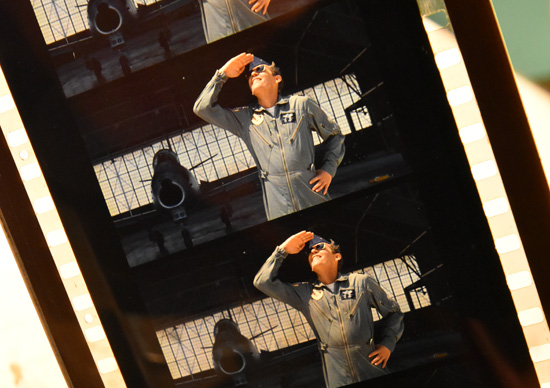 Genauso spannend wie die Entstehung des Films selber ist die Entstehung
seiner Musik. Eigentlich sollte John Barry die Musik zu Philip Kaufmans
Film komponieren. Doch der schmiss das Handtuch, weil er einfach nicht
verstand, was Kaufman haben wollte. Der nämlich beschrieb Barry
gegenüber seinen idealen Score folgendermaßen: „Die Musik sollte so
klingen, als würde man in der Wüste spazieren und plötzlich einen Kaktus
sehen, auf den man seinen Fuß setzt, und der dann anfängt, durch den Fuß
hindurchzuwachsen.“ Alles klar? Genauso spannend wie die Entstehung des Films selber ist die Entstehung
seiner Musik. Eigentlich sollte John Barry die Musik zu Philip Kaufmans
Film komponieren. Doch der schmiss das Handtuch, weil er einfach nicht
verstand, was Kaufman haben wollte. Der nämlich beschrieb Barry
gegenüber seinen idealen Score folgendermaßen: „Die Musik sollte so
klingen, als würde man in der Wüste spazieren und plötzlich einen Kaktus
sehen, auf den man seinen Fuß setzt, und der dann anfängt, durch den Fuß
hindurchzuwachsen.“ Alles klar? So kam Bill Conti an Bord. Der erinnert sich, dass er gerade mit seiner Familie in Urlaub fahren wollte und die Koffer schon auf dem Gang standen, als ihn plötzlich sein Agent anrief und ihm sagte, dass er sofort nach San Francisco kommen müsse, weil der Komponist für „The Right Stuff“ abgesprungen war. Conti ließ alles stehen und liegen, enttäuschte seine Familie und flog schnurstracks nach San Francisco. Der sogenannte „Temp Track“, mit dem die Rohschnittfassung des Films unterlegt war, bestand aus Musik von Gustav Holsts Die Planten, Henry Mancinis Score zu „The White Dawn“ und verschiedenen anderen Klassikstücken, die dem Regisseur besonders gut gefielen. Conti schrieb nicht weniger als drei verschiedene Versionen für den Film. Die erste war ein vollständig eigenes Werk, die zweite eine von Holsts Planeten inspirierte Musik und die dritte kopierte schließlich einfach den Temp Track. Da letztere Version fast ausschließlich aus Holsts Planeten bestand, verständigte man sich darauf, dass im Falle der Verwendung dieser Variante Gustav Holst als Komponist genannt werden sollte, da sich Conti nicht mit dem Ruhm eines Kollegen bekleckern wollte. Am Ende entschied sich Kaufman jedoch für die zweite Version, also jene, die von Holst inspiriert war. Zusätzlich wurden Henry Mancinis „The White Dawn“, Passagen von Tschaikowskis Konzert in D-Dur sowie das Stück „Wild Blue Yonder“ mit übernommen. Offenbar war dies genau die richtige Entscheidung: Conti erhielt den Oscar für die beste Filmmusik! Trotz dieses Erfolges wurde der Soundtrack übrigens erst 25 Jahre später auf CD veröffentlicht – gemastert von Contis eigenen Bändern, die er damals aufbewahrt hatte und die dann leider qualitativ schon gelitten hatten. Aber jetzt heisst es erst einmal anschnallen, zurücklehnen und staunen! |
|
"The Little Shop of Horrors", 2 October 2016 | |
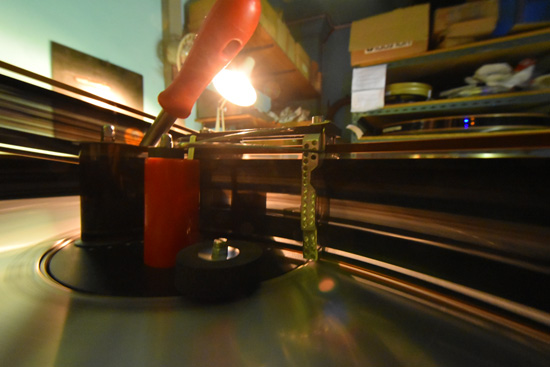 „Der kleine Horrorladen“ (im Original
„Little Shop of Horrors“) ist die Verfilmung des gleichnamigen Musicals
von Alan Menken und Howard Ashman, das wiederum auf dem Film „Kleiner
Laden voller Schrecken“ von B-Film-Guru Roger Corman aus dem Jahr 1960
beruht. Das Musical wurde am 6. Mai 1982 in New York uraufgeführt. Die
deutsche Erstaufführung fand am 6. Mai 1986 statt und zählt hier
inzwischen zu den am häufigsten aufgeführten Musicals ohne festen
Spielort. Gewürzt mit viel schwarzem Humor und fetziger Musik wird die
Geschichte der fleischfressenden Pflanze Audrey II erzählt, die am
liebsten Menschen verschlingt. „Der kleine Horrorladen“ (im Original
„Little Shop of Horrors“) ist die Verfilmung des gleichnamigen Musicals
von Alan Menken und Howard Ashman, das wiederum auf dem Film „Kleiner
Laden voller Schrecken“ von B-Film-Guru Roger Corman aus dem Jahr 1960
beruht. Das Musical wurde am 6. Mai 1982 in New York uraufgeführt. Die
deutsche Erstaufführung fand am 6. Mai 1986 statt und zählt hier
inzwischen zu den am häufigsten aufgeführten Musicals ohne festen
Spielort. Gewürzt mit viel schwarzem Humor und fetziger Musik wird die
Geschichte der fleischfressenden Pflanze Audrey II erzählt, die am
liebsten Menschen verschlingt.Obwohl im Abspann die Jim Henson Company nicht namentlich erwähnt wird, konnte Regisseur Frank Oz für die Realisierung der fleischfressenden Pflanze Audrey II auf umfangreiche Unterstützung des befreundeten Unternehmens zurückgreifen. Für die Animation der Pflanze waren zeitweilig bis zu drei Dutzend Puppenspieler erforderlich. Jene Szenen, in denen die Pflanze aufwändig animiert wird, gehören auch deswegen zu den bis dahin kompliziertesten Dreharbeiten, da sie aufgrund der Unmöglichkeit, Audrey II in Echtzeit zu animieren, nur in verminderter Geschwindigkeit realisiert werden konnten, das heißt Schauspieler, Kamera und Puppenspieler mussten synchron in gleichmäßig reduzierter Geschwindigkeit agieren und sprechen. Martin P. Robinson, der Designer von Audrey II, hatte sich zuvor mit seiner langjährigen Arbeit für die Sesamstraße einen Namen gemacht. In der Hoffnung, jetzt nicht allzuviel zu verraten, sei noch erwähnt, dass das Ende des Films ursprünglich ganz anders aussehen sollte: gigantische Audrey-II-Pflanzen zerstören New York in einer beeindruckenden Special Effects Sequenz! Dies entspricht dem Ende des Musicals. Nachdem das Publikum in Testaufführungen jedoch negativ reagierte (Zitat Frank Oz: „The audience hated us“), wurde dieses Ende herausgeschnitten und ein Happy End nachproduziert. 1998 veröffentlichte Warner Home Video eine Special Edition des Films auf DVD, die das ursprüngliche Ende als Bonusmaterial enthielt – in Schwarzweiß und Rohfassung zwar, aber immerhin mit dem richtigen Ende. Einige Tage später ließ Produzent David Geffen diese DVD einziehen und durch eine DVD ohne das ursprüngliche Ende ersetzen. Dadurch wurde die Erstauflage zu einem echten Sammlerstück. Auf dem 2012 in den USA auf Blu-ray-Disc und DVD veröffentlichten Director’s Cut des Films ist sowohl das Kinoende als auch das in Farbe, mit Ton und Effekten wiederhergestellte ursprüngliche Ende enthalten. Diese Veröffentlichung ist nach wie vor verfügbar und wurde (noch) nicht eingezogen. |
|
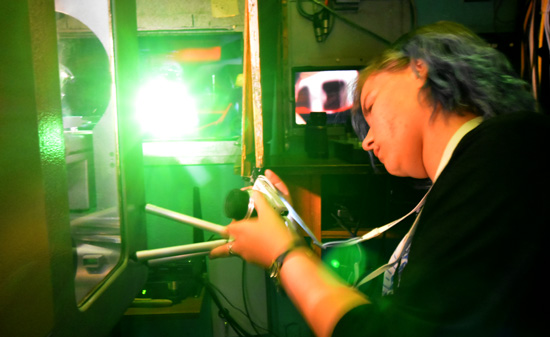 David Geffen was one of the original producers of the off-Broadway show
and he began planning to produce a feature film adaptation. He
originally wanted Steven Spielberg to executive produce the film and
Martin Scorsese to direct. Scorsese wanted to shoot the film in 3-D, but
plans fell through and Scorsese's first 3-D film would be „Hugo“ 25
years later. John Landis was also approached to direct. David Geffen was one of the original producers of the off-Broadway show
and he began planning to produce a feature film adaptation. He
originally wanted Steven Spielberg to executive produce the film and
Martin Scorsese to direct. Scorsese wanted to shoot the film in 3-D, but
plans fell through and Scorsese's first 3-D film would be „Hugo“ 25
years later. John Landis was also approached to direct.Geffen then offered the film to Frank Oz, who was finishing work on „The Muppets Take Manhattan“ around the same time. Oz initially rejected it, but he later had an idea that got him into the cinematic aspect of the project, which he did not figure out before. Oz spent a month and a half to restructure the script which he felt was stage-bound. Geffen and Ashman liked what he had written and decided to go with what he did. Oz was also studying the Off-Broadway show and how it was thematically constructed, all in order to reconstruct it for a feature film. The film differs only slightly from the stage play. The title song is expanded to include an additional verse to allow for more opening credits. The song "Ya Never Know" was re-written into a calypso-style song called "Some Fun Now", although some of the lyrics were retained. Four other songs ("Closed for Renovation", "Mushnik and Son", "Now (It's Just the Gas)", as well as "Call Back in the Morning") were cut from the original production score. An original song written by Ashman and Menken, "Mean Green Mother from Outer Space", was created for the film. „Little Shop of Horrors“ was filmed on the Albert R. Broccoli 007 Stage at the Pinewood Studios in England, where a "downtown" set, complete with overhead train track, was constructed. The film was produced on a budget of $25 million, in contrast to the original 1960 film, which, according to Corman, only cost $30,000. The film's original 23-minute finale, based on the musical's ending, was rewritten and reshot after audiences at the preview screenings did not react positively to it. Additional sequences and songs from the original off-Broadway show were dropped or re-written in order for the feature version to be paced well. The notable change was for the "Meek Shall Inherit" sequence. As originally filmed, it detailed through a dream sequence Seymour's rising success and the need to keep the plant fed and impress Audrey. In the final cut, the dream sequence and much of the song is cut out. Oz said, "I cut that because I felt it just didn't work and that was before the first preview in San Jose. It was the right choice, it didn't really add value to the entire cut." The full version of the song was included on the film's soundtrack album, as were the songs from the original ending. The sequence was deemed to be lost until in 2012 when it was rediscovered on a VHS workprint that contained alternate and extended takes and sequences. |
|
 There are no blue screens or opticals involved in any of Audrey II's
scenes, with the exception of the reshot ending where the plant is
electrocuted, designed by Visual Effects supervisor Bran Ferren, and in
some shots during the rampage in the original ending. The plant was made
in six different stages of growth and there were three different
versions of Mushnik's shop, making it possible for two units to work
with different sized plants at the same time. Each of the talking plants
had to be cleaned, re-painted and patched up at the end of each shooting
day, which would take up to three hours depending on the size. The
"Suppertime" number uses two different sizes of Audrey II. When the
plant is singing all alone in the shop, it is actually a smaller size:
the same size as when it sang "Feed Me", but now standing on a scaled
down set to make it look larger. There are no blue screens or opticals involved in any of Audrey II's
scenes, with the exception of the reshot ending where the plant is
electrocuted, designed by Visual Effects supervisor Bran Ferren, and in
some shots during the rampage in the original ending. The plant was made
in six different stages of growth and there were three different
versions of Mushnik's shop, making it possible for two units to work
with different sized plants at the same time. Each of the talking plants
had to be cleaned, re-painted and patched up at the end of each shooting
day, which would take up to three hours depending on the size. The
"Suppertime" number uses two different sizes of Audrey II. When the
plant is singing all alone in the shop, it is actually a smaller size:
the same size as when it sang "Feed Me", but now standing on a scaled
down set to make it look larger. The dentist's office originally was more grungy and blood-splattered but those details did not go over well with test audiences. The set was cleaned up and the scenes re-shot for the final film. The filmmakers originally offered the role of Audrey to Cyndi Lauper, before casting original stage star Ellen Greene. Madonna was also reportedly considered for the role. Last but not least you can actually see the film’s director Frank Oz: as the salesman who tries to get Seymour to sign a contract during the song "The Meek Shall Inherit". I hope that you will enjoy this show as much as I do! |
|
"Lethal Weapon 2", 2 October 2016 | |
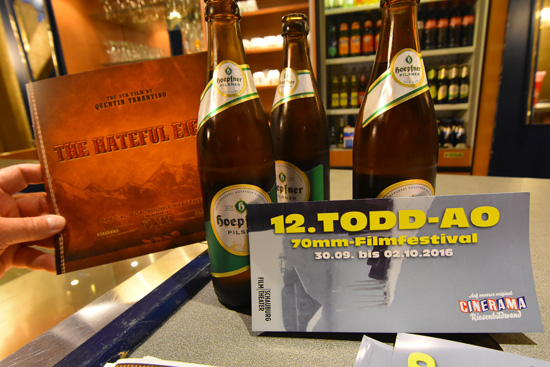 After „Lethal Weapon“ turned out to be
huge hit in 1987, earning $120 million on the budget of $15 million, it
was decided to make a sequel. Producer Joel Silver asked the writer of
the first film, Shane Black, to write the script for the sequel, and
Black agreed. Despite having some problems in his personal life, Black
managed to write his first draft of the script in six months along with
his friend, novelist Warren Murphy. After „Lethal Weapon“ turned out to be
huge hit in 1987, earning $120 million on the budget of $15 million, it
was decided to make a sequel. Producer Joel Silver asked the writer of
the first film, Shane Black, to write the script for the sequel, and
Black agreed. Despite having some problems in his personal life, Black
managed to write his first draft of the script in six months along with
his friend, novelist Warren Murphy.Although many people thought that their script was brilliant, Warner Bros studio and producers, including Silver, and director Richard Donner however disagreed with Black's decision to kill off Riggs' character in the ending, because they wanted to keep him alive for future sequels, and they also thought that Black and Murphy's script was way too bloody and dark, and they wanted a lighter, more comedy-like script, while their draft was completely serious and focused more on courage and heroics. Following the studio's negative reaction on his script and their demands for massive re-writes, Shane Black left the project after six months earning only $125,000 for his work (Warren Murphy also earned the same amount), and never worked on any of the sequels. Black said in later years in interviews how he considers his original script for „Lethal Weapon 2“ which was also called „Play Dirty“ to be his best work and most intense script he has written, and how his script was completely different than the one used for filming. He also said the problem with the final version of the second movie was that they did too much comedy, and how he dislikes the other two sequels of the film because of the way they ruined Riggs' character. According to director Richard Donner's commentary for the film, although they rejected writer Shane Black's original draft of the script mostly because of the ending where Riggs dies, they still filmed the ending of the movie in a way that they could edit it in two different versions: Riggs dying or Riggs surviving. After a good response from the audience during test screenings of the movie, it was decided to keep Riggs alive. The last shot of the movie showing Riggs on the ground and Murtaugh holding him while the camera moves away from the scene into the air showing the sunrise was actually meant to be used in the ending where Riggs dies, which is why both he and Murtaugh don't move during the scene, so in a way, the movie does end with Riggs dying from his wounds. Despite many attempts by fans of the „Lethal Weapon“ movies and Shane Black, his original script for the second film was never found and it remains highly demanded and most wanted of all of Black's scripts. Despite all the screenplay issues, the film made over $82 million dollars more than the first „Lethal Weapon“ movie which also made it the most successful in the series totaling in $147.7 million. |
|
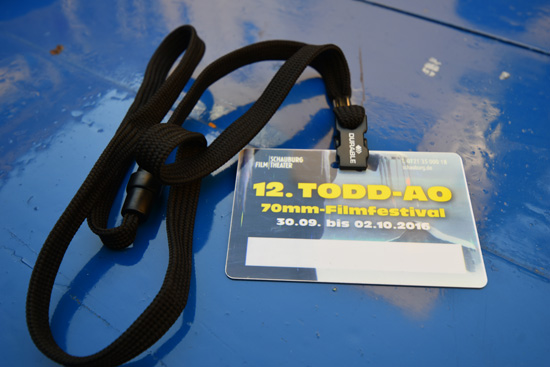 Zum Abschluss des 12. Todd-AO Filmfestivals lassen wir es noch einmal so
richtig krachen und präsentieren Ihnen den Film mit dem höchsten „Body
Count“, also der höchsten Anzahl Toter nicht nur dieses Wochenendes,
sondern auch der gesamten „Lethal Weapon“-Serie: 33 haben Fachleute
gezählt! Zum Abschluss des 12. Todd-AO Filmfestivals lassen wir es noch einmal so
richtig krachen und präsentieren Ihnen den Film mit dem höchsten „Body
Count“, also der höchsten Anzahl Toter nicht nur dieses Wochenendes,
sondern auch der gesamten „Lethal Weapon“-Serie: 33 haben Fachleute
gezählt! Ohne das jetzt spoilern zu wollen, aber Mel Gibson alias Riggs gehört nicht zu diesen 33. Zumindest nicht in jener Fassung, die letztendlich in die Kinos kam. Da man während den Dreharbeiten noch nicht so recht wusste, welches Ende man wählen sollte, wurden auch zwei Fassungen der End-Musik angefertigt. Michael Kamen steuerte den Track „Riggs Dying“ bei, gefolgt von Eric Claptons Version von „Knocking on Heaven’s Door“. Würde sich der Regisseur also für Riggs Tod entscheiden, hätten wir diese beiden Stücke gehört. Doch soweit kam es nicht: im Hinblick auf eine lukrative Fortsetzung ließ man Riggs weiterleben und untermalte die Endtitel mit dem von George Harrison, Tom Petty und Jeff Lynne komponierten Song „Cheer Down“. Und da wir gerade bei der Musik sind: Patsy Kensit, einer der Stars des Films, war Lead-Sängerin der kurzlebigen britischen Popgruppe „Eighth Wonder“ und es ist sicherlich kein Zufall, dass wir ausgerechnet einen Song dieser Gruppe im Film zu hören bekommen. Es handelt sich um den Titel „I’m Not Scared“ und er ist in jener Szene zu hören, in der der von Joe Pesci gespielte Leo Riggs Haus putzt. In einem Interview beschrieb Patsy Kensit ihre Sexszene mit Mel Gibson einmal als sehr unangenehm, weil beide zu diesem Zeitpunkt nicht nur verheiratet, sondern auch Katholiken waren. Ja, das Filmgeschäft fordert so manches harte Opfer! Jetzt also ein letztes Mal „Vorhang auf und Film ab“. Wir sehen uns wieder im nächsten Jahr! • Go to Wolfram Hannemanns's in70mm.com Library |
|
|
Go: back
- top - back issues
- news index Updated 21-01-24 |
|
